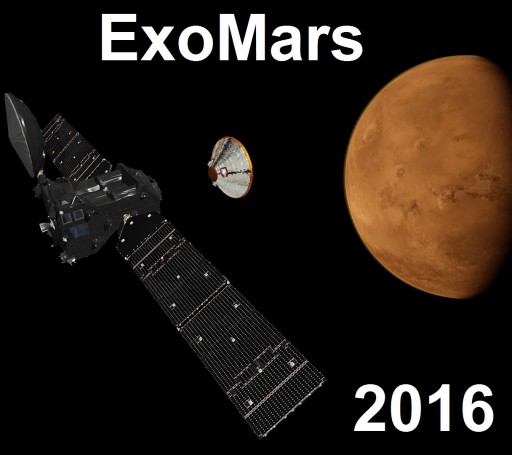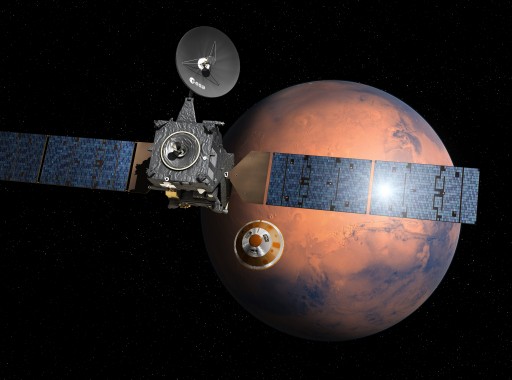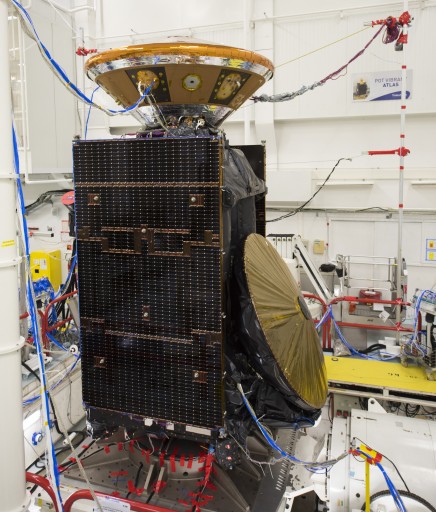
ExoMars, short for Exobiology on Mars, is a joint mission of the European Space Agency and the Roscosmos State Corporation including two separate launches to deploy an orbiter and stationary lander to Mars followed by a lander and rover.

The mission is primarily dedicated to the search for biosignatures on Mars to provide firm evidence of past or present life on Earth's neighbor in the solar system.
The first launch, set for 2016, will deliver to Mars the Trace Gas Orbiter along with the Entry, Descent and Landing Demonstrator Module "Schiaparelli" to conduct a landing demonstration and study Martian weather for a short-duration mission of only a few days while the orbiter embarks on a multi-year mission to study the Martian atmosphere and act as a communications terminal, relaying data between surface craft and Earth. For this first ExoMars mission, ESA is providing the EDM lander and the Trace Gas Orbiter Spacecraft while Roscosmos is responsible for half the orbiter's instruments and the Proton rocket sending the craft to Mars.

The second ExoMars mission, targeting a 2018 or 2020 launch, will aim to deliver a rover to the Martian surface, building on lessons learned in the 2016 landing demonstration. Again, Roscosmos will be responsible for the launch using a Proton rocket while also providing some rover instruments and building the lander that delivers the rover to the surface of Mars. ESA's part in the second flight will be the entire rover and the bulk of its science payload.
The objectives of the ExoMars project are both technological and scientific in nature. The technological goals of the missions include the demonstration of landing large payloads on Mars, to exploit solar power on the surface of Mars, to employ a drill capable of collection samples from a depth of two meters and to develop a mobile surface exploration capability using a rover.
The prime science objective of the ExoMars project is to search for possible biosignatures of Martian life, past or present, to characterize water content and chemical composition of the subsurface as a function of depth, to study the surface environment and identify possible risk to crewed Mars exploration, and to investigate the deeper interior of Mars to understand the planet's evolution and associated implications on habitability.
ExoMars 2016 and 2018/20 are also understood to be the first stepping stones in an incremental development of interplanetary exploration technology on a path to sample return missions to Mars and possibly other targets.
